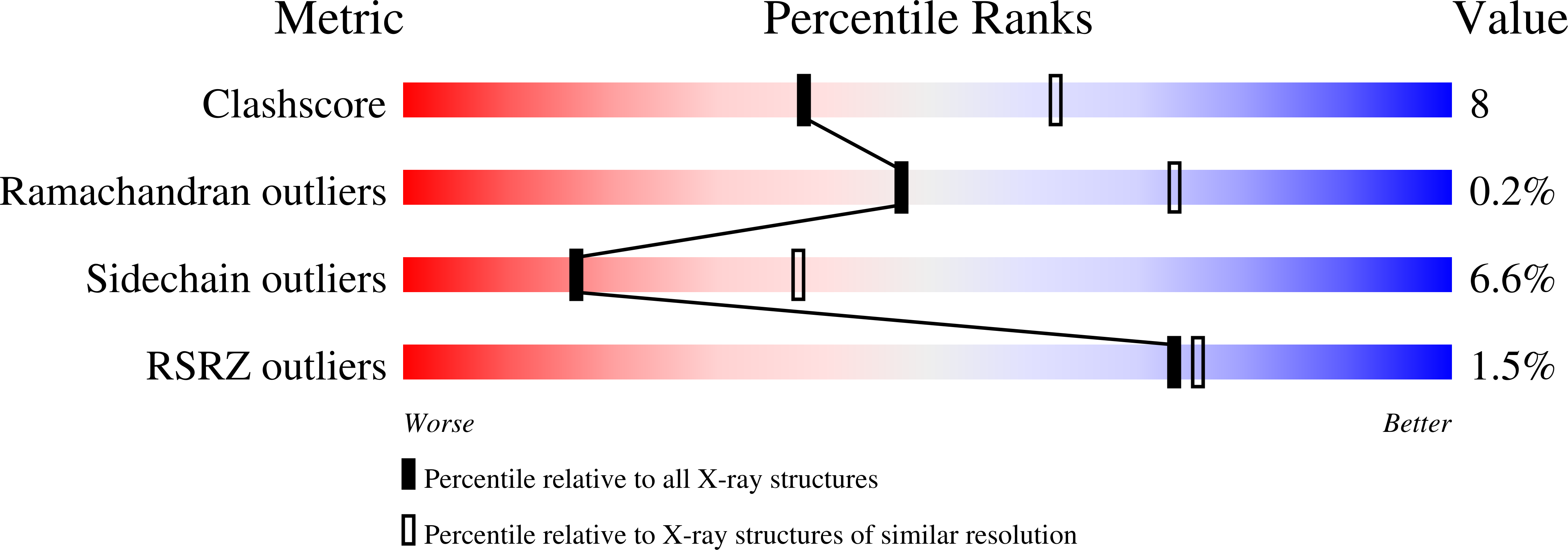Enhanced local symmetry interactions globally stabilize a mutant virus capsid that maintains infectivity and capsid dynamics.
Speir, J.A., Bothner, B., Qu, C., Willits, D.A., Young, M.J., Johnson, J.E.(2006) J Virol 80: 3582-3591
- PubMed: 16537626
- DOI: https://doi.org/10.1128/JVI.80.7.3582-3591.2006
- Primary Citation of Related Structures:
1ZA7 - PubMed Abstract:
Structural transitions in viral capsids play a critical role in the virus life cycle, including assembly, disassembly, and release of the packaged nucleic acid. Cowpea chlorotic mottle virus (CCMV) undergoes a well-studied reversible structural expansion in vitro in which the capsid expands by 10%. The swollen form of the particle can be completely disassembled by increasing the salt concentration to 1 M. Remarkably, a single-residue mutant of the CCMV N-terminal arm, K42R, is not susceptible to dissociation in high salt (salt-stable CCMV [SS-CCMV]) and retains 70% of wild-type infectivity. We present the combined structural and biophysical basis for the chemical stability and viability of the SS-CCMV particles. A 2.7-A resolution crystal structure of the SS-CCMV capsid shows an addition of 660 new intersubunit interactions per particle at the center of the 20 hexameric capsomeres, which are a direct result of the K42R mutation. Protease-based mapping experiments of intact particles demonstrate that both the swollen and closed forms of the wild-type and SS-CCMV particles have highly dynamic N-terminal regions, yet the SS-CCMV particles are more resistant to degradation. Thus, the increase in SS-CCMV particle stability is a result of concentrated tethering of subunits at a local symmetry interface (i.e., quasi-sixfold axes) that does not interfere with the function of other key symmetry interfaces (i.e., fivefold, twofold, quasi-threefold axes). The result is a particle that is still dynamic but insensitive to high salt due to a new series of bonds that are resistant to high ionic strength and preserve the overall particle structure.
Organizational Affiliation:
Department of Molecular Biology, The Scripps Research Institute, 10550 North Torrey Pines Rd., La Jolla, CA 92037, USA.














